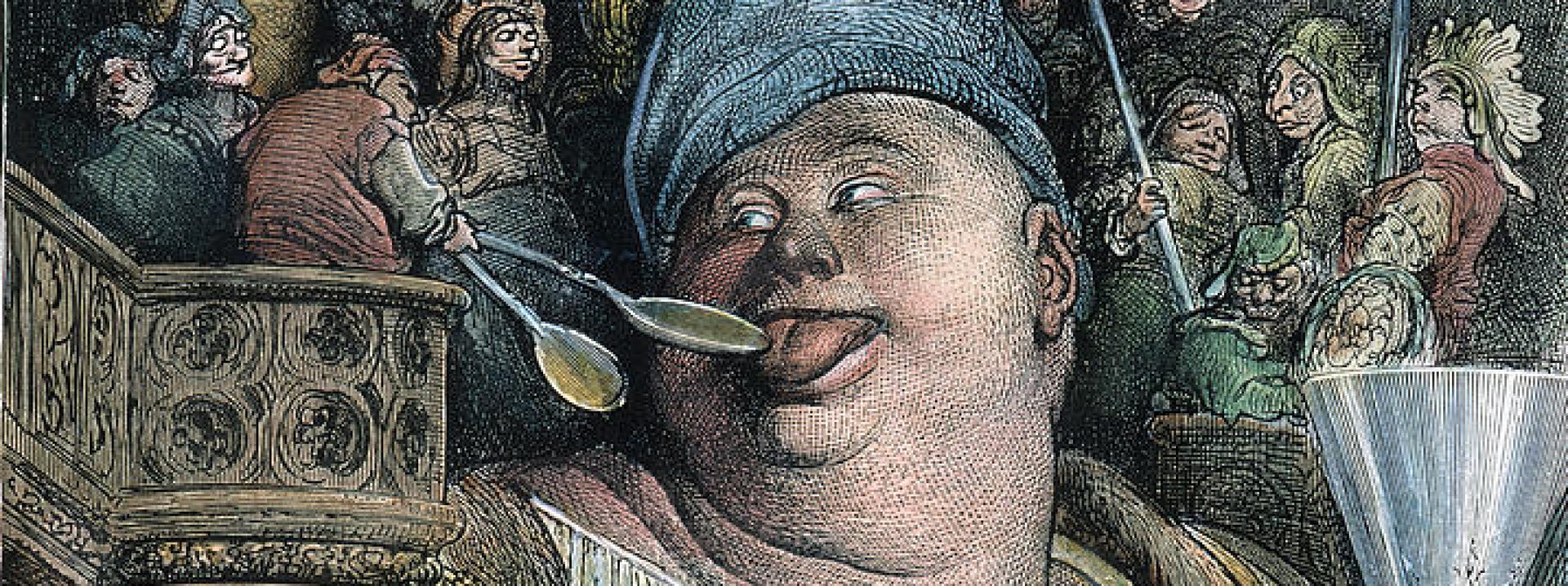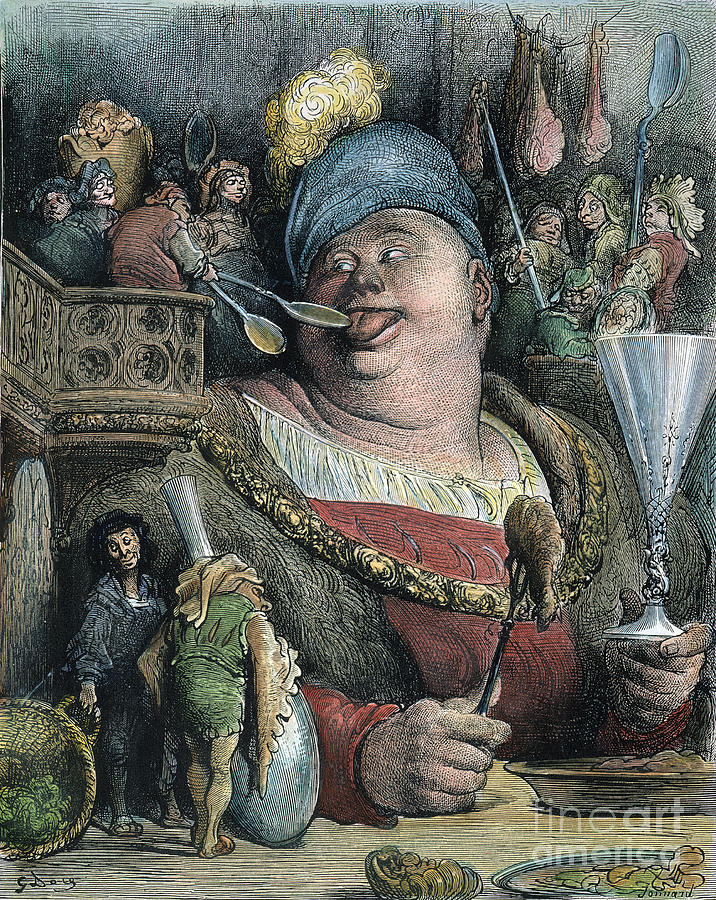I absolutely love language, so this research was so fun, and going back to the text to find examples was highly entertaining. Hope you enjoy too!
As purists in the Renaissance worked to revive the Latin language of classical antiquity, shutting down those who spoke it in the vernacular, they “transformed it into a dead language” (Bakhtin 466). As Rabelais wrote, a war was taking place between classical and medieval Latin, along with the national language—in his case, French. As languages were trying to sort themselves out, borrowing from others (French, for example took a lot from Italian), an incredibly unique opportunity arose (Bakhtin 469). In no other time period were so many new, vernacular words printed for the first time (Bakhtin 457). Rabelais was revolutionary for language and literature.
Bakhtin takes an incredibly complimentary view of Rabelais work in this respect, arguing that “the defeat of this most obstinate and secret element [linguistic dogmatism] was possible only through intense interorientation and mutual clarification of languages which took place at that time.” To translate, Rabelais uncrowned and opposed those linguistic purists, but was only able to do this because of the shifting languages during the Renaissance. Life itself imitated the carnivalesque during this period, as “simultaneous death and birth” of languages and philosophies occurred on a grand scale (Bakhtin 473). What a fantastically interesting time for language and linguistics! What better time to write about the grotesque and carnivalesque than in a time of birth and death, and with misshapen, imperfect languages? Rabelais completely overturned the perfection-seeking Latinists but took it even a step further by moving into the common street talk of the “French” language.
Expertly, Rabelais maneuvered between all of these languages, using colloquial French terms (which again, had never been put to print before) right alongside highbrow, highly educated ones. Men’s names are those of common diseases, physical ailments, unflattering or standout features, and even those of household objects, but they are immersed in a world of literature and learning. He mentions someone named “Geoffrey Long-Tooth” only one sentence away from “Pictoribus atque poetis” (“painters and poets [have equal license to dare everything”]), a quote from Horace—a famous Latin poet (Pantagruel 31). Seigneurs de Bumkis and de Slurp-ffart plead their case before Pantagruel in a very serious legal matter, all done in a ridiculous manner, of course (62). Rabelais makes it impossible to take his work seriously, and yet demands respect at the same time.
Bakhtin especially points out these kinds of vernacular nicknames; Rabelais uses proper nouns to describe everything about a person, essentially breaking down the barriers between real people and objects until both have the same character (Bakhtin 462-3). It goes both directions: the character of the objects is strengthened because they are similar to people, and the character of people is strengthened because they have a specific attribute to ground and explain their whole personage. In the “swab episode,” Bakhtin argues that each of the objects Gargantua uses to wipe himself is individualized and strengthened in just this same way. After seeing names such as Bumkis, perhaps someone named “ear-muffs,” longwort,” or even “March cat” does not seem so far off the mark (Gargantua 247). Suddenly a list of household objects (and animals) become humanized in a bizarre and horrible way. Some of these nicknames are not as obvious in English and could be easily missed if the reader does not pronounce them aloud—or has no idea what to look for. Gargantua comes from “que grand tu as” (“what a big [gullet] you have!”), which his father shouted at his birth. Additionally, his father’s own name is Grandgousier, another name along the lines of “great gullet” (Gargantua 228).
There is incredible insight from Bakhtin into the world of Rabelais and how purposeful all of his language is, and without his analysis breaking down the etymology of certain words or pointing out the historical significance, a lot of the meaning would be lost on (especially) modern readers. Although these crazy nicknames were likely clever and wonderful jokes for a French speaker, they struggle to translate to English. Rabelais wrote his work in such a specific time with specific language relations, and Bakhtin makes that excessively clear. An English translator can try to adapt some jokes (as our translator often does quite well) but there is really no way to replicate the effect that Rabelais had. Using half-dead languages right alongside unfinished new ones and breaking down the barriers between people and objects, he created a literary work built of several broken and unfinished languages: a grotesque Frankenstein of carnivalesque humor.


I think this is an interesting facet of Rabelais and the carnivalesque in general to focus in on! I think we’ve touched on this in reading diaries, but there seems to be a tension between contemporary appreciation and the essential locality of carnivalesque literature, which is fundamentally rooted in folk language which in turn is particular to each language in general and geographical/class distinctions/time period besides. Your final paragraph, of course, draws out that translation is a barrier for full appreciation (which I’m sure we’d agree is a barrier for any text, but perhaps specifically text that is so involved in its own language– there’s nothing so difficult to translate as a pun). I wonder if there’s something about the carnivalesque and its embracing of the specificities of the vernacular that point to a tension between the universal and the specific. As I think you’ve drawn out, celebrating the vernacular and its quirks is a uniquely carnivalesque use of language (per Bakhtin), but any literature that makes use of vernacular quirks is also uniquely *dated* since vernacular is such a living, changing thing. While Bakhtin asks us to understand the carnivalesque/grotesque as a common, universal expression of humanity (etc), I wonder if literature that expresses it successfully is only the most successful it can ever be in the topical moment of its creation. Maybe it’s universal, yes, but also only *fully* appreciable by a very specific demographic (and necessarily so), which is not to say degrees of appreciation aren’t also invaluable in their own way.
I’m glad that you brought up this topic about language! As a foreigner studying here, I am troubled by the language barriers every day. Not only the barrier between my native language and English, but also the barrier among multiple languages when I look at Latin and Greek texts. Because of differences in language structure, culture, and history, I often find it impossible to perfectly express the story of one language in another. This is also reflected in the process of reading Rabelais. I found and read a Chinese version after reading the English version, and it appeared when reading both of the two versions that I could clearly sense the vernacular expression, but I could not tell that it is specifically French vernacular. Both versions look “Western” to me, but their language expressions did not provide me with more information about the contemporary society or religious background of Rabelais. Especially when I was reading the English version, for most of the time I concentrated on getting a correct understanding of the text, so sadly I don’t think I was able to appreciate Rabelais’ language very well.
Thanks for this deeper analysis into Rabelais and his choice of speech/word use. He is very creative in the names he uses as opposed to a typical Latin or French name and as you said this alone undermines the seriousness of what’s said. Without reading Bahktin or being knowledgeable of these languages these puns/jokes would fly over our head therefore losing its funny. Overall, I really enjoyed this because language is an important barrier that is often overlooked while reading translated texts.